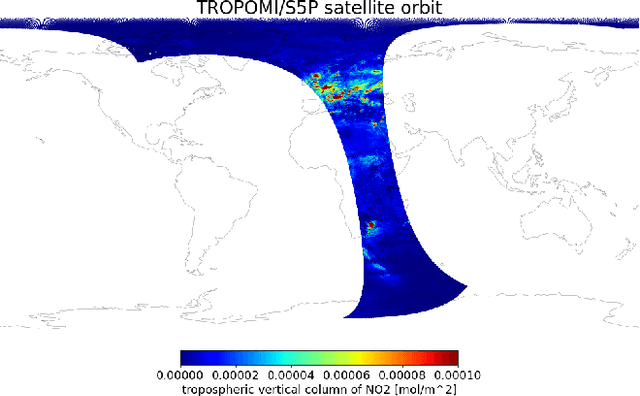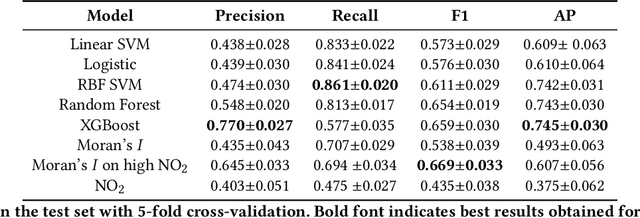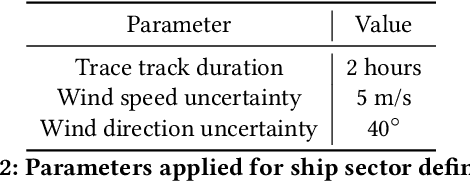Solomiia Kurchaba
Detection of anomalously emitting ships through deviations from predicted TROPOMI NO2 retrievals
Feb 24, 2023Abstract:Starting from 2021, more demanding $\text{NO}_\text{x}$ emission restrictions were introduced for ships operating in the North and Baltic Sea waters. Since all methods currently used for ship compliance monitoring are financially and time demanding, it is important to prioritize the inspection of ships that have high chances of being non-compliant. The current state-of-the-art approach for a large-scale ship $\text{NO}_\text{2}$ estimation is a supervised machine learning-based segmentation of ship plumes on TROPOMI images. However, challenging data annotation and insufficiently complex ship emission proxy used for the validation limit the applicability of the model for ship compliance monitoring. In this study, we present a method for the automated selection of potentially non-compliant ships using a combination of machine learning models on TROPOMI/S5P satellite data. It is based on a proposed regression model predicting the amount of $\text{NO}_\text{2}$ that is expected to be produced by a ship with certain properties operating in the given atmospheric conditions. The model does not require manual labeling and is validated with TROPOMI data directly. The differences between the predicted and actual amount of produced $\text{NO}_\text{2}$ are integrated over different observations of the same ship in time and are used as a measure of the inspection worthiness of a ship. To assure the robustness of the results, we compare the obtained results with the results of the previously developed segmentation-based method. Ships that are also highly deviating in accordance with the segmentation method require further attention. If no other explanations can be found by checking the TROPOMI data, the respective ships are advised to be the candidates for inspection.
Supervised segmentation of NO2 plumes from individual ships using TROPOMI satellite data
Mar 14, 2022



Abstract:Starting from 2021, the International Maritime Organization significantly tightened the $\text{NO}_\text{x}$ emission requirements for ships entering the Baltic and North Sea waters. Since all methods currently used for the ships' compliance monitoring are costly and require proximity to the ship, the performance of a global and continuous monitoring of the emission standards' fulfillment has been impossible up to now. A promising approach is the use of remote sensing with the recently launched TROPOMI/S5P satellite. Due to its unprecedentedly high spatial resolution, it allows for the visual distinction of $\text{NO}_\text{2}$ plumes of individual ships. To successfully deploy a compliance monitoring system that is based on TROPOMI data, an automated procedure for the attribution of $\text{NO}_\text{2}$ to individual ships has to be developed. However, due to the extremely low signal-to-noise ratio, interference with the signal from other - often stronger - sources, and the absence of ground truth, the task is very challenging. In this study, we present an automated method for segmentation of plumes produced by individual ships using TROPOMI satellite data - a first step towards the automated procedure for global ship compliance monitoring. We develop a multivariate plume segmentation method based on various ships', wind's and spatial properties. For this, we propose to automatically define a region of interest - a ship sector that we normalize with respect to scale and orientation. We create a dataset, where each pixel has a label for belonging to the respective ship plume or not. We train five linear and nonlinear classifiers. The results show a significant improvement over the threshold-based baselines. Moreover, the aggregated $\text{NO}_\text{2}$ levels of the segmented plumes show high correlation with the theoretically derived measure of ship's emission potential.
 Add to Chrome
Add to Chrome Add to Firefox
Add to Firefox Add to Edge
Add to Edge